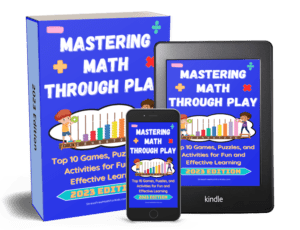Introducing Rounding
One of my favorite and most effective lessons I ever taught was when I came up with a spontaneous activity for teaching rounding for understanding to a group of third graders.
We used the life size number line, one of the best tools for teaching any arithmetic concept. I gave the small group the number cards 0-100 and had them place them in order to make a vertical number line. Then I put upside down colored bowls (“caves”) at each ten. The students each got an animal counter which they could place anywhere on the number line. When they had all placed their animals I told them to move their animal to the closest cave. As they did this we talked about the concept of halfway. I didn’t want them to memorize a rhyme like “five and above give it a shove,” I wanted them to understand the idea of more than halfway and less than halfway. It worked!
After doing that a few times we moved to paper number lines at their tables, using their fingers instead of animal counters. It amazed me how fast they got the concept.
A similar idea I got from ProTeacher forums would be to create a giant number line on the floor with masking tape. Write the numbers 0-150 by tens spaced out on the tape. The students line up and one at a time are given a number. When it is their turn, they have to put one foot on each of the tens that the number would fall between. They then have to decide (out loud) which one would be the closest ten and jump over to the number they choose as the correct one.
Since then I read Gail Englert’s description of how she uses a duck story to introduce rounding to 5th graders. I really loved this as she is able to use it to develop understanding of halfway with numbers into the ten thousands. As she says, “This understanding transfers to many other situations. It makes working with fractions easier, since they are using some fraction language in a way that is concrete. It forms the basis of some algebra instruction, since students are representing numbers by graphing them.”
INTERVENTION
If you have students who still aren’t getting it here is a great guide for intervention from The Math Spot.
STEPS FOR ROUNDING TO PARTICULAR PLACE VALUE
Once the kids have conceptual understanding, here is a tip I copied from the Teacher2Teacher Math Forum for helping them remember the steps of rounding to a particular place value. Not all kids will need this but it will be helpful to those who need specific steps to remember:
“In a moment of desperation, I once created the “UZA” (pronounced ooza) method of rounding. The name is catchy, and helps kids remember. It is an acronym for “Underline, Zero, Arrow”. I have them first decide which number that they’re rounding to. When they find the number (for example, the hundreds place), I have them underline it. (“U”). Next, they mark through every number to the right of the underlined number, and write zeroes for underneath each number. (“Z”). They then draw an arrow (“A”) from the underlined number to the number to the right, and examine it, asking themselves, is this number greater than 4? If it is, add one to the underlined number, if it isn’t, leave it alone. Then write the number beside the zeros. As we work, we repeat the UZA code.”
Making It Useful
At the same time I was teaching rounding, I taught kids to use it to estimate to add. This gave them a real reason to learn it, which always increases motivation and retention!
Then as an enrichment activity for your high flying students, this is a great free one:
Creating a Menu Using Rounding and Estimation
FREE VIRTUAL RESOURCES
PBS Odd Squad Meatball Mountain video


